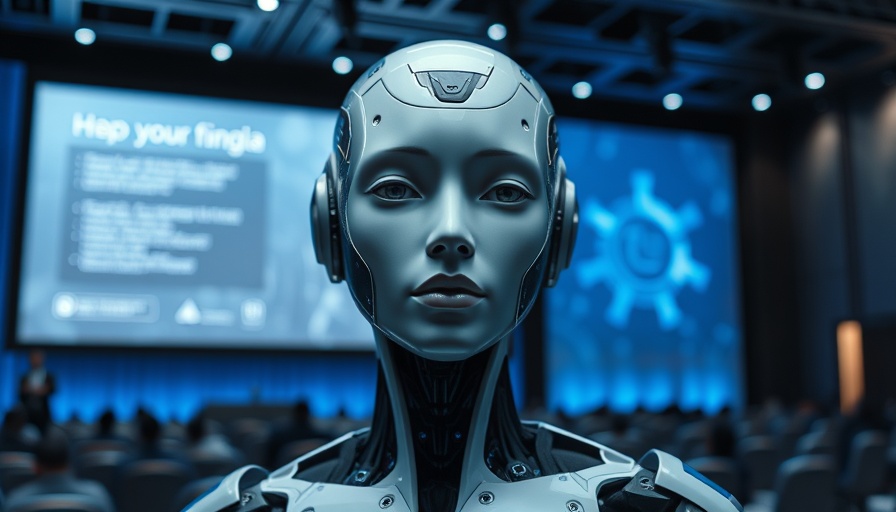
The Coming Tech Revolution: 17 Trends Shaping 2026
As we rapidly approach the year 2026, technology is expected to transform our daily lives in unprecedented ways. This article analyzes 17 groundbreaking trends that are not just on the horizon, but are progressively unrolling before our very eyes. Each trend offers a glimpse into how artificial intelligence, automation, and advanced interfaces will fundamentally reshape industries and individual experiences.
In 'Top 17 New Technology Trends That Will Define 2026', the discussion dives into transformative trends shaping our future, exploring key insights that sparked deeper analysis on our end.
Automation Takes Over: AI's Role in Everyday Tasks
One of the most intriguing insights regarding the future of work is the prediction that by 2026, AI will automate up to 70% of daily tasks. This means that roles traditionally considered essential may soon be performed by machines, leading to a significant shift in workforce dynamics. Automation tools such as ServiceNow and UiPath have already demonstrated capabilities where entire workflows can operate with little to no human intervention. Consider the implications for R&D directors: leveraging these systems can streamline operations, allowing teams to direct their attention toward higher-impact projects.
Low Code, No Code: Empowering Innovation
One of the standout trends is the rise of low code and no code development platforms. These technologies allow virtually anyone to create applications without needing a deep programming background. Platforms like Glide and Bubble empower individuals from varying backgrounds—especially tech investors and innovation executives—to prototype ideas quickly and efficiently. By 2026, over 75% of new applications are predicted to be built using these tools. This democratization of technology will spur innovation across sectors.
Healthcare Reimagined: AI Goes Personal
The healthcare landscape will become increasingly personalized thanks to advancements in AI technology. By 2026, tools powered by AI could analyze vast amounts of health data, predicting potential diseases even before symptoms manifest. New developments like Google's Deep Mind have already shown promising results in spotting health risks from retinal scans. For innovation executives, this means a greater opportunity to invest in solutions that enhance patient outcomes and operational efficiencies.
The Interface of the Future: Brain-Computer Connections
Perhaps the most ambitious frontier is the rise of brain-computer interfaces (BCIs). These technologies are moving from experimental setups to practical applications that could enable paralyzed patients to control devices just by thinking. Companies like Neurolink and Synchron are pioneering these efforts, which will challenge our current understanding of communication and movement. For R&D directors, this opens a realm of potential applications, ranging from assistive technologies to enhanced interfaces that redefine interaction with digital platforms.
AI Agents: Moving Beyond Response
AI is evolving from mere response tools to autonomous agents capable of managing entire tasks on your behalf. A shining example is Devon, the AI software engineer launched by Cognition Labs, which can develop and deploy websites independently. This capability will profoundly impact businesses, allowing teams to delegate routine tasks to AI agents that work alongside them, enhancing productivity. This evolution signifies a shift for tech investors, who will need to rethink where their investments can yield the highest returns.
Generative AI: The New Creator
The incorporation of generative AI will drastically alter the content creation landscape by 2026. Advanced models will streamline the production of text, images, and videos, creating opportunities for dramatic efficiency in various fields. As firms in diverse sectors increasingly adopt generative tools, understanding their implications for market dynamics will become crucial for innovation executives looking to stay ahead of the curve.
These trends reveal not just a future but a roadmap for companies and individuals eager to shape their paths in an evolving technological landscape. As we dive deeper into 2026, keeping a pulse on these changes will be essential.
To explore how these trends could specifically affect your industry or discuss possible strategies, consider engaging with peers in tech forums or attending industry workshops. By collaborating and exchanging insights, professionals like you can stay at the forefront of innovation and technology.
 Add Row
Add Row  Add
Add 




Write A Comment